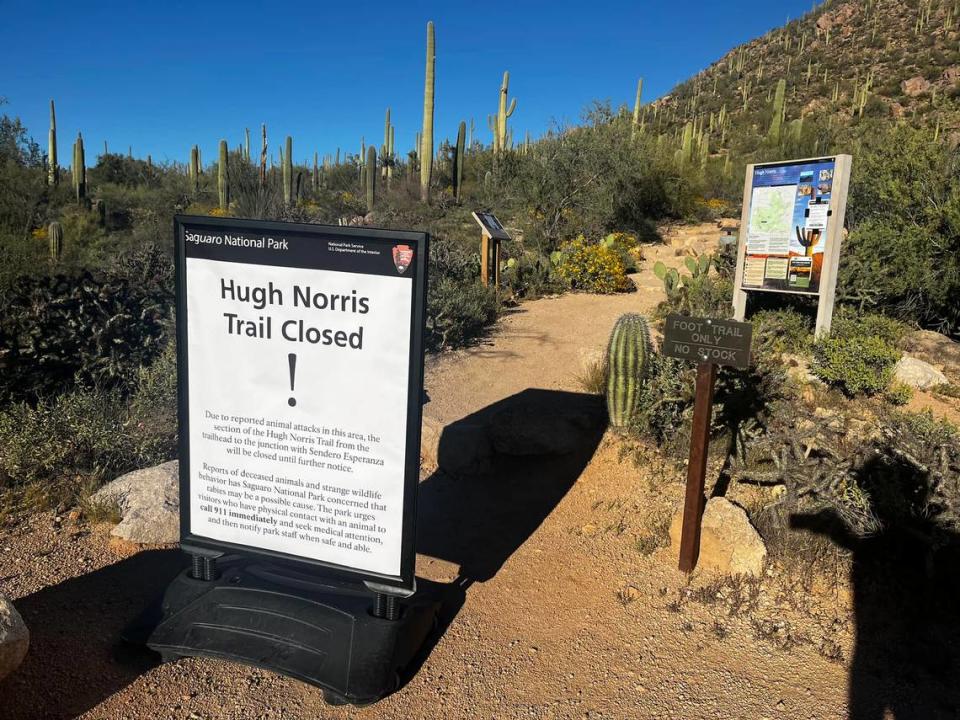Rabid fox attacks three hikers within days at Arizona national park, officials say
A rabid gray fox attacked three hikers within days at an Arizona national park, wildlife officials said.
The attacks happened April 3 and April 4 on the Hugh Norris Trail in Saguaro National Park West, the Arizona Game and Fish Department in Tucson said in a Facebook post.
Two of the hikers tried to fend off the aggressive animal with trekking poles, wildlife officials said.
One hiker was scratched on the leg by the animal, the agency’s spokesperson Mark Hart told McClatchy News.
The fox bit the second hiker’s boot, but Hart said it didn’t break the skin. The third hiker was potentially scratched, so all three hikers were treated for rabies.
Wildlife officials then shut down the trail.
A park officer spotted it on the trail on April 5. The animal was euthanized and tested for rabies, and the test was positive for the viral disease, officials said.
The national park is separated into eastern and western sections around Tucson.

Other animals seen acting strange at park
This isn’t the first time a rabid animal injured someone within the park.
A bobcat bit and scratched a 66-year-old who had been visiting the eastern side of the park on Jan. 21, McClatchy News reported.
The animal was never found, but authorities suspected it was rabid.
Additional animals were reported acting strange in the park in January, including foxes and raccoons, wildlife officials said.
An attacking coyote was trampled by a horse Feb. 22 in eastern Tucson, Hart said, and it tested positive for rabies. A fox also attacked a hiker March 28 near Mount Lemmon, he said.
Officials are warning visitors to take “extra precautions” while visiting the park.
What are the signs of a rabid animal?
Rabies is a viral infection that can be transmitted to animals and humans, according to the National Park Service.
When an animal becomes infected with rabies, they can lose their fear of humans and appear sleepy, confused or aggressive, officials said.
An animal may also drool more, have trouble moving, look paralyzed or bite at the air, the Centers for Disease Control and Prevention said.
Some animals don’t show any signs of the virus, the CDC said.
How to prevent getting rabies
To avoid getting rabies, people should keep a distance from wildlife and report sick animals to rangers or wildlife officials, the NPS said. This includes not touching wildlife.
Small openings on homes, cabins and tents should also be blocked off so wildlife can’t get through, officials said.
Officials also advise teaching children about the dangers of rabies.
If someone is bitten by an animal, immediate medical attention should be sought.
Rabid raccoon bites hiker traveling through national park, officials say. What to know
Hiker strangles rabid coyote to death after it bites him in woods, Rhode Island cops say
Animals are acting strange at an Arizona national park. Now officials have theory why

